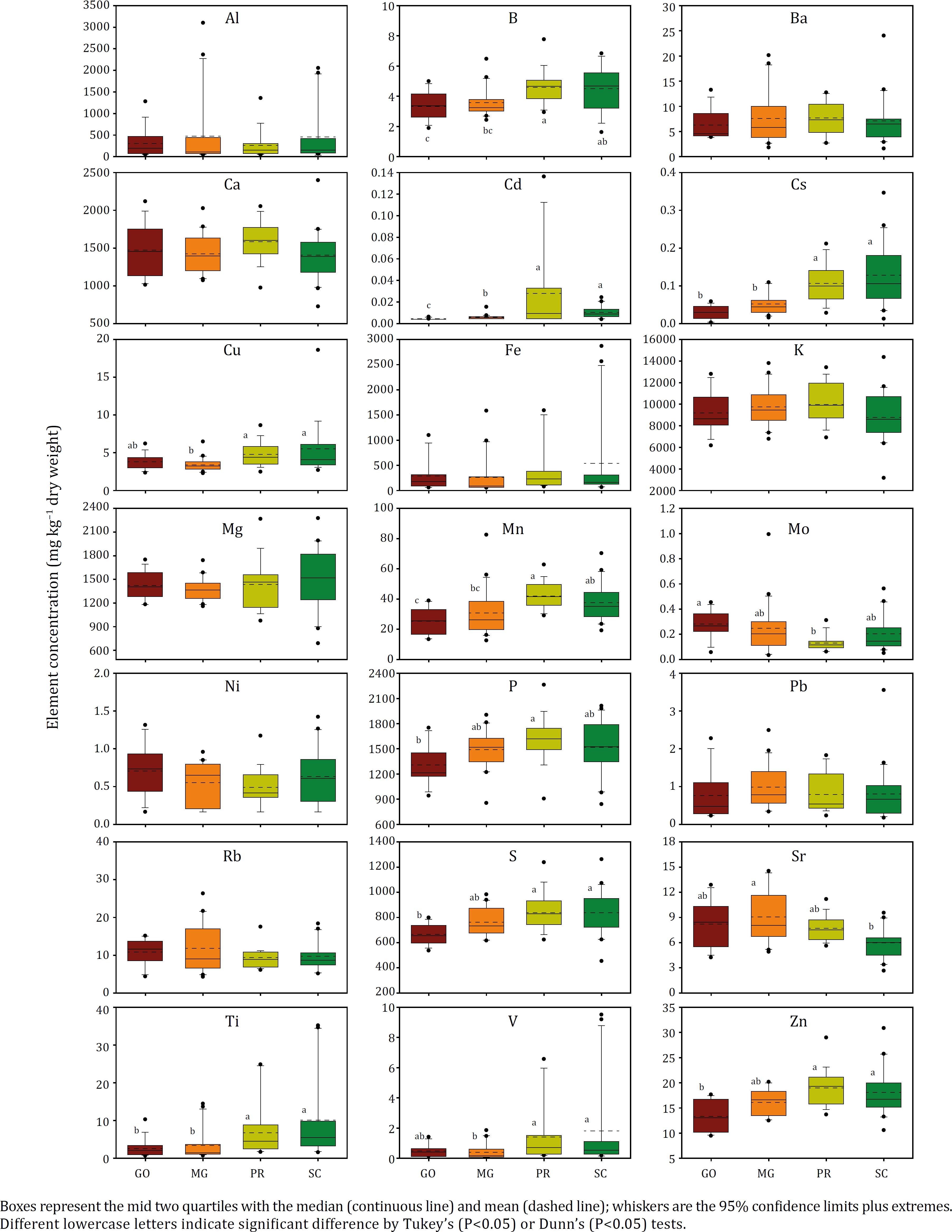ABSTRACT
Our aim was to assess the mineral composition of corn silages produced in four states of Brazil: Goiás, Minas Gerais, Paraná, and Santa Catarina. In total, seventy-three samples were analyzed. Total element content was extracted by HNO3 and H2O2 microwave-assisted digestion, and inductively coupled plasma-mass spectrometry (ICP-MS) was used to determine concentration. Of the 31 elements analyzed (Ag, Al, As, B, Ba, Be, Ca, Cd, Co, Cr, Cs, Cu, Fe, K, Li, Mg, Mn, Mo, Na, Ni, P, Pb, Rb, S, Se, Sr, Ti, Tl, U, V, and Zn), 21 had concentrations above equipment detection limits. No elements reached the maximum tolerable concentration, but concentrations of Ca (0.14-0.15%), Cu (3.4-5.6 mg kg−1), P (0.13-0.16%), S (0.06-0.08%), and Zn (13-19 mg kg−1) were below the adequate concentration for good nutritional balance. The strong and consistent correlation observed between Fe and Ti in silage samples indicated contamination by soil. Mean concentrations of Cu, Mn, Mo, P, S, and Zn were different among states, and canonic analyses successfully discriminate samples according to their state of origin. Minerals from corn silage should be considered when formulating balanced cattle diets. To ensure silage quality, farmers must adopt strategies that reduce contamination by soil during the ensiling process.
Keywords:
dairy nutrition; elemental composition; Zea mays L.























































































